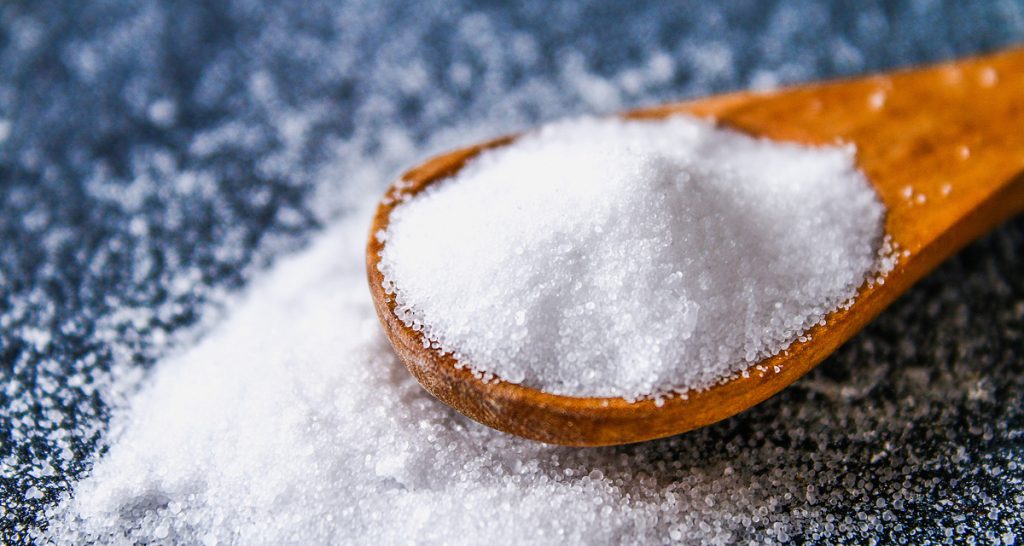You’ve probably heard of the sugar tax – an extra charge placed on products containing higher levels of sugar, such as fizzy drinks. This measure was introduced to try and curb the nations over consumption of unhealthy sweet treats. And now, the same idea is being suggested for salt.
The British Heart Foundation has proposed the measure, as a way to reduce health risks, such as heart attacks and stroke, which can be linked to a diet high in salt.
How much salt should we be having?
Our body needs only a small amount of sodium – around six grams a day. But we tend to get a lot more of this through foods processed with added salt.
While we may think that simply cutting back on seasoning our food could help solve the problem, it’s a lot harder in reality. Public Health England has estimated that 85% of the salt we eat is already in food at the point of purchase with consumers only adding 15% during cooking or at the table. So, the burden of the problem lies more with food manufacturers.
Back in the early 2000s, the UK’s per capita consumption of salt fell, thanks to a directive from the then Food Standards Agency, who told food producers to cut the amount used in their products. It was an effective message and one which was supported by public health experts and doctors. But it didn’t last. In 2010, a change in government lead to a change in policies and the stricter standards began to loosen.
What are the risks of too much salt?
Salt is a major contributor to high blood pressure, the main cause of heart attacks and strokes, which between them claim tens of thousands of lives a year.
While there are short-term effects to watch out for, such as bloating and headaches, the long term impact of too much salt is something to be mindful of. A high-sodium diet can raise your risk of an enlarged heart muscle, heart failure, high blood pressure, kidney disease, kidney stones, osteoporosis, stomach cancer, and stroke.
How can you tell if you’re eating too much salt?
The longer-term effects of too much salt may take a while to become obvious, but there are warning signs to pay attention to which can indicate that you need to cut back.
Bloating is one of the most common effects of having too much salt as it helps your body retain water, leading to fluid build-up.
High blood pressure: The change in blood pressure happens through your kidneys. Too much salt makes it harder for them to get rid of excess fluid, in turn raising your blood pressure.
Puffiness. Swelling can be a sign of too much sodium in your body and may be noticeable in your face, hands, feet, and ankles.
Thirst. When you eat too much salt, you become dehydrated, and your body pulls water from your cells.
Where can we find hidden added salt?
Avoiding a shake of salt at the dinner table might be easy, but sneaky sources of salt are everywhere. Even in places you wouldn’t expect, including:
- Bread
- Cereals
- Cheese and butter
- Cold and processed meats
- Potato snacks
How to add flavour without salt
Cutting down on the amount of salt in your diet may be good for you, but there’s a reason it’s added to so many foods – it tastes good! Fortunately, you don’t have to compromise on flavour in order to feel better. It’s just a case of learning about the best ways to spice up your dishes with low sodium options, such as:
Alliums – All members of the onion and garlic family are great for adding flavour. Chives and spring onions can be added at the end of cooking and onions and garlic cooked slowly at the beginning.
Heat – If you love hot food, chillies and ginger are a great option
Herbs and spices – Fresh herbs, such as parsley, mint, basil, and coriander, add bursts of flavour when added to dishes, while dried staples such as cumin, coriander and smoked paprika add savoury flavour to sauces, stews and curries.
Sauces like soy, fish sauce, hoisin and black bean are packed with savoury flavour.
White pepper – While white and black pepper compliment almost any dish, white pepper has a touch more savoury flavour.
Zest – Citrus zest and juice add a deliciously tangy and fresh flavour to tempt your tastebuds
What if it’s not salt causing symptoms?
If some of the symptoms listed above seem familiar, it may be the case that you need to cut down on the amount of salt in your diet. But if you’ve done this and still find your experiencing problems, such as bloating or headaches, it may be the case that something else in your diet is to blame.
One way to find out is to follow an elimination diet. This involves removing a suspected food from your diet for a few weeks and tracking how you feel.
While this trial-and-error method can be a great way to get to the bottom of a food intolerance, it can also be time consuming. It’s common for people to experience reactions to a number of foods, and it can take a while to uncover them all yourself Additionally, as food intolerances involve a delayed reaction that can take up to 72 hours to develop, pinning down the cause can be very difficult.
If you want answers faster, and with the dedicated support of a nutritional therapist who can help you make the best possible food choices for you and your health, our quick and convenient home to lab food intolerance test could be just the right thing for you.


